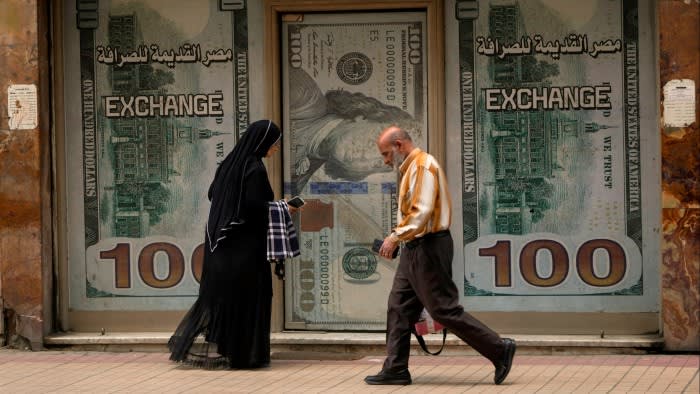- Arvind's Newsletter
- Posts
- Arvind’s Newsletter
Arvind’s Newsletter
Issue No #1064
1.Apple, Samsung boost India’s mobile phones exports to ₹1.2 trillion, 1/3rd of India’s domestic production
The exports would account for nearly one-third of the total domestic production of mobile phones, projected at about ₹4.1 trillion in FY24, the Indian Cellular and Electronics Association said on Thursday. According to industry observers, a majority of the mobile phone exports by value are on account of Apple and Samsung devices.
India’s mobile phone manufacturing industry is estimated to have produced about 2.45 billion devices worth ₹19.45 trillion cumulatively over the past 10 years, a shade below its target of 2.5 billion phones worth about ₹20 trillion, the association said.
India is the world’s second-largest producer of mobile phones.
“The sector has transitioned from being 78% import dependent in 2014 to 97% self-sufficiency currently. The future would be export growth-led," the association said.
2.Why are so many Indians piling into stocks? The Economist
By the end of March 2020 the number of individuals registered to trade with India’s National Stock Exchange (nse) totalled just 31m (of a population of 1.4bn). In the months that followed, even as a new virus upended global society, another bug was quietly spreading among the Indian middle classes: an infectious enthusiasm for investing. Within 12 months the number of investors had expanded by a third to 40m. Today there are more than 90m unique accounts registered with the exchange. An alternative measure, that tries to gauge nationwide stock trading accounts, has nearly tripled between 2019 and 2023, from 41m to 140m. The Nifty 50, NSE’s benchmark index, routinely hits all-time highs, most recently on March 7th.
The deluge of retail investors in equities represents a sea-change in middle-class India’s culture of saving. Indians have long parked their money in low-risk, low-return assets, chiefly gold, which at nearly 16% accounted for the biggest share of household wealth in 2023 after property, at 51%. Bank deposits and insurance funds together made up another 20%. Equities (directly held or through funds) still represent a small share of the pie, but one that is growing rapidly: from 2.2% in 2013 to 4.7% a decade later. Americans, in comparison, have 40% of their household assets in equities.
What explains this dramatic shift in behaviour? Four factors worked together to make it happen. The first is the impressive digital infrastructure built by India over the past decade or so. Since 2016 there has been a massive expansion in internet access. This has been buttressed by government-backed tech, which reduces the time taken to open bank and trading accounts from days to minutes, along with a friction-free digital payments system that enables instant transfers.
The second factor is the pandemic. In India, with no furlough schemes or stimulus cheques to shield professionals from lay-offs and wage cuts, households were forced to take a hard look at their finances and decide how to make their savings work harder. Equities were an obvious answer.
Moreover, investment apps such as Groww and Zerodha made it a cinch to sign up and get started. Zerodha, for instance, had 1.3m customers before covid-19 hit. By the end of 2022 that number was nearly 10m. “The numbers were crazy,” says Karthik Rangappa, the company’s head of education. “I don’t think India has seen this kind of enthusiasm in equities [before].”
Third, years of advertising by the mutual-fund industry had established the idea in the minds of Indians that equities were a way to grow wealth. Assets invested in mutual funds trebled between 2009 and 2020; they grew by another 33% in the next three years. It was a small step from investing in a mutual fund to experimenting with other products and individual stocks. Last, the market itself provided plenty of reason to dive in. A pandemic-induced downturn proved short-lived. Impressive GDP numbers and a sense domestically that India’s economic rise is unstoppable have added to the euphoria. In January India’s stock market became the fourth-largest globally, after its total market capitalisation exceeded that of the Hong Kong Stock Exchange.
This worries some market observers. The Securities and Exchange Board of India, the market regulator, is said to have asked asset managers to caution investors about the dangers of piling into less-liquid small-cap firms. Analysts worry that many public companies are overvalued. They also fret that social-media “finfluencers” are creating unrealistic expectations. The number of new entrants in the market every month is at its highest level ever, exceeding the peaks in the pandemic. Between November and January 58m new investors registered with the NSE, compared with 33m in the same period the previous year.
For industry insiders the chief risk is not just a correction. It is that many first-timers with no experience of taking losses may be so scarred by the experience that they never return to the equity markets. That would be a much bigger loss.
3.Cabinet approves ₹10,372-crore for India AI Mission
The Union cabinet has approved a ₹10,372-crore India AI Mission that will provide funding for deep-tech AI startups as well as seek to develop an open-source database that can be used to train artificial intelligence models and other applications.
The mission will also provide a framework for developing graphic processing units (GPUs) under public-private partnerships as well as multi-model, domain-specific large language models that power generative AI platforms.
“A multi-faceted comprehensive framework has been created to bolster an AI-based solutions ecosystem in India," Union minister of commerce Piyush Goyal said.
4.A Mammoth Step Forward
A Texas-based biotechnology startup, Colossal Biosciences, announced yesterday it had successfully transformed elephant cells into an embryo-like state—a key step in its effort to engineer a close approximation to extinct woolly mammoths.
The approach can be traced to 2006 when Nobel Prize-winning research proved that mouse cells could be reverted into embryo-like stem cells capable of growing into various forms of tissue. This process has worked in humans, monkeys, and leopards but proved difficult to apply to elephant cells, which researchers linked to elephants' innate resistance to cancer. The team now says it created the embryo-like cells capable of creating elephant tissue like hair or blood. The company plans to use these cells to experiment with tissue samples and identify gene changes required to infuse Asian elephants with mammoth-like traits, including shaggy hair.
A living, mammoth-like elephant is likely a number of years away. In the meantime, however, scientists have already created mammoth meatballs.
5.Egypt expanded its bailout deal with the International Monetary Fund as Cairo looks to avert its worst economic recession in decades.
The approval of the $8 billion loan — which amounts to roughly 2% of the country’s GDP — comes shortly after Cairo devalues the Egyptian pound by 40% and rapidly raised interest rates, both seen as requirements by the IMF. However, the main factor holding Egypt back, The Economist has argued, is the militarization of its economy. The country’s armed forces are involved in running everything from petrol stations to mineral water, making the economy uncompetitive. “No ordinary company can compete with an outfit that pays no tax or custom fees and which can throw rivals in jail, “it wrote last year.
6.A British musician became the first sitar player to win a Royal Philharmonic Society Award.
Jasdeep Singh Degun was named best instrumentalist at the prestigious classical music ceremony. His work Orpheus, a reworking of Monteverdi’s Orfeo combining Indian and Western classical music, was also nominated for a composition award.
Degun, who is from Leeds in UK, got his break when it turned out one of the musicians on his first album, Anomaly, played tennis with former Genesis singer Peter Gabriel: Gabriel liked the album so much he signed him to his label.
7.Can gossip be good?
Gossip has a very bad reputation. The word “gossip” itself has negative connotations (as do its synonyms, like “idle talk,” tittle-tattle,” “hearsay,” “blather,” and “rumor-mongering”), and much of this negativity is not totally unreasonable, as gossip is sometimes very harmful.
But, on some occasions, it’s a good and useful thing for people to gossip. For instance, if someone in a community is genuinely very dangerous, it’s important that the evidence of this is spread throughout the community.
In this article, Clearer Thinking team will explore what makes good and bad, starting with a distinction between healthy, valuable gossip (called “Noble Gossip”) and its sometimes viscous and often destructive counterpart (called “Ignoble Gossip”).
8.Last month was the world’s warmest February on record, setting a new global temperature high for the ninth straight month.
The European Earth Observation Agency said the global average temperature in February was 1.77 degrees Celsius above the pre-industrial average.
December, January, and February all saw record heat from northern Siberia to South America and Australia, with unusually wet or dry conditions in different regions: The Mediterranean saw a shortage of rain, while western Europe got more than usual.
A climate scientist told the Financial Times that the heat was “not really surprising”given warming trends, although the run of record-breaking temperatures will likely come to a halt over spring and summer as the El Niño climate phenomenon, which pushes warm water to the ocean surfaces, weakens and stops.





